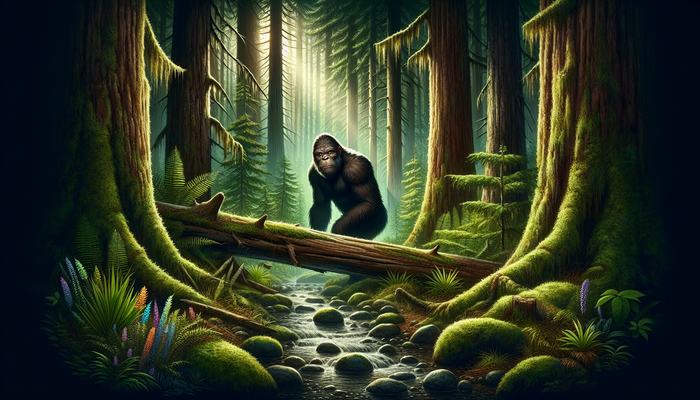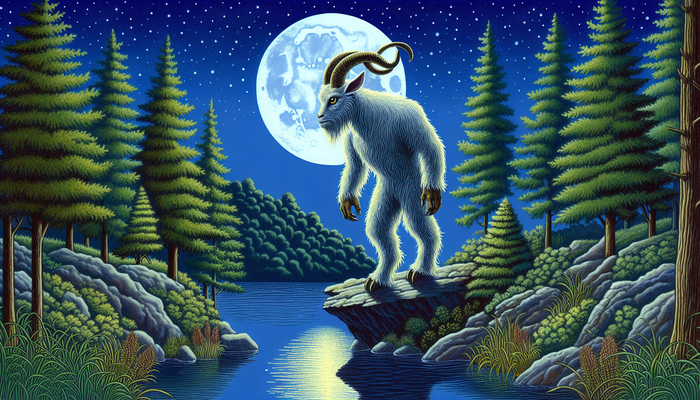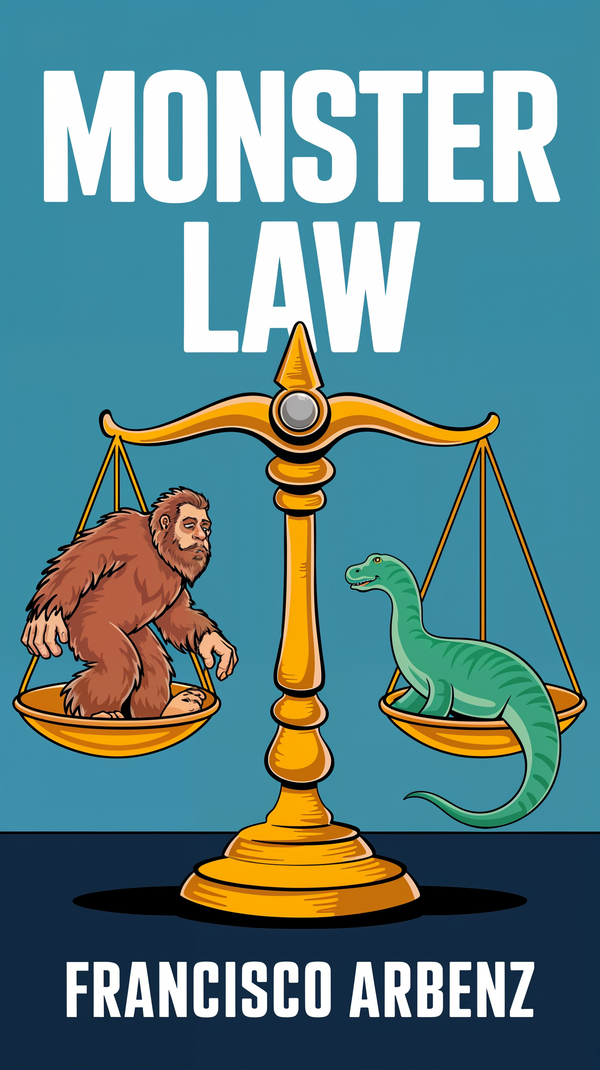Titanoboa Cerrejonensis, the Colossal Prehistoric Predator

By Oliver Bennett, Bigfoot Researcher and Teacher
Introduction
Imagine a world where the largest snake ever known roams the ancient rainforests, a creature so massive it dwarfs the largest snakes known to man today. This was the reality during the Paleocene epoch approximately 60 million years ago, when the colossal serpent Titanoboa cerrejonensis reigned supreme in the jungles of what is now Colombia. As a cryptozoology enthusiast, I have always been fascinated by accounts of gigantic beasts lost to time, and Titanoboa captured my imagination from the moment I first learned of its discovery. Join me as we unravel the mysteries surrounding this prehistoric titan among snakes, from its initial revelation to the insights it provides into a long-vanished world.
Discovery of a Colossus
In the early 2000s, a remarkable fossil discovery shook the world of paleontology and cryptozoology alike. A team of researchers from the University of Florida and the Smithsonian Tropical Research Institute unearthed the first fossils of Titanoboa cerrejonensis while excavating the Cerrejón coal mines of La Guajira, Colombia. The fossils were initially believed to belong to an ancient crocodile species due to their massive size. However, upon closer inspection, the vertebrae and ribs were identified as belonging to a previously unknown genus of gigantic snake.
I still recall the goosebumps I felt reading the initial reports, as it became clear that the fossils represented the largest snake ever discovered by science. The Cerrejón coal mines provided the ideal conditions for such an extraordinary find, preserving snapshots of prehistoric life in layers of rock and mud. While plant and small animal fossils had been found before, nothing had prepared researchers for uncovering the remains of a beast measuring over 40 feet long and weighing nearly a ton.
From a cryptozoological perspective, Titanoboa's discovery is incredibly significant. It demonstrates that even in a relatively well-studied region like South America, enormous species can elude detection for millions of years until the right conditions for fossilization occur. As an avid map collector, I am reminded of those tantalizing notations of sea serpents and other creatures drawn on ancient maps and documents. Perhaps they were more than just fanciful embellishments? Titanoboa fuels the imagination with possibilities and serves as a reminder that plenty of mysteries still lurk undiscovered, even in the most unlikely places.
Titanoboa's World
In order to understand Titanoboa, we must first comprehend the environment it inhabited around 60 million years ago. The Paleocene epoch was a time of recovery and renewal following the mass extinction that wiped out the dinosaurs. With these great reptiles gone, mammals began their ascent, but the world still belonged to the reptiles. The steamy rainforests that covered ancient Colombia provided the perfect ecosystem for Titanoboa to dominate.
Based on fossil evidence, we know that Titanoboa inhabited vibrant jungles with active river systems, dense vegetation, and hot humid conditions. In contrast to modern tropical rainforests, the plant diversity was relatively low, likely a lingering effect of the Cretaceous-Paleogene mass extinction. But the reptilian megafauna had exploded in variety, with Titanoboa ruling over crocodile relatives, giant turtles, and other colossal creatures. In fact, some ancient turtles measured over 5 feet long, with shells large enough to serve as hiding places for small dinosaurs, had any survived.
I often imagine time travel back to Titanoboa's era, where I follow guides along jungle trails, catching glimpses of the mighty snake as it slithers through rivers. Of course, as a Briton more accustomed to the ancient woodlands and moors of England, I doubt I would last long in the oppressive heat and humidity of ancient Colombia! Still, it is captivating to envision this primordial world, so similar yet alien to the rainforests of today, where one false step could place you in the path of an apex predator beyond imagination.
A Glimpse into the Life of a Giant
Thanks to its remarkably well-preserved fossils, researchers have been able to piece together details about Titanoboa's characteristics and lifestyle. The largest individuals measured over 40 feet long and weighed around 2,500 pounds. To put that into perspective, Titanoboa dwarfed even the massive anacondas and reticulated pythons of today. The biggest anacondas barely surpass 20 feet and 500 pounds, while reticulated pythons may reach 23 feet long but have much lighter frames.
Clearly, Titanoboa was in a league of its own when it came to size. In fact, it edged out the previous record holder, an ancient snake called Gigantophis that reached 33 feet in the Eocene epoch. But Titanoboa was not just huge - it was also a highly successful predator. Based on its environment and similarities to modern boas, researchers believe it spent much of its time in water. The rivers and swamps would have allowed Titanoboa to support its massive body with buoyancy and conceal itself when hunting.
As an apex predator, Titanoboa would have preyed upon a variety of creatures. Giant turtles, lungfish, and ancient crocodilians likely formed part of its diet. One can only imagine the epic battles that must have ensued between Titanoboa and the 15-foot crocodile relatives who shared its habitat! Of course, the snake's enormous size and constricting abilities gave it the advantage in most encounters. Once prey was secured, Titanoboa could swallow it whole, digesting everything from flesh and bone to shell. Truly the stuff of nightmares for any animal sharing its environment!
Titanoboa and Ancient Climates
While Titanoboa's discovery alone was remarkable, the giant snake also holds intriguing implications for our understanding of ancient climates. As ectotherms, snakes cannot internally regulate their body temperature and rely on external heat sources. Larger snakes require higher, more stable temperatures to support their bulk and metabolism. By comparing Titanoboa's dimensions to those of modern snakes, researchers concluded that its habitat must have averaged 86°F to 93°F annually.
This suggests that tropical regions were significantly warmer in the Paleocene than previously thought. In fact, Titanoboa's home may have exceeded modern rainforest temperatures by up to 10 degrees Fahrenheit! As a scholar of history and science, I find it fascinating how breakthroughs in one field can reshape ideas in another. The fossils of Titanoboa challenge existing theories about the temperature limits of tropical ecosystems. They also offer valuable perspectives on how rainforests may respond to future climate change, whether natural or human-induced.
The Legacy of Titanoboa
Since its initial discovery, Titanoboa has continued to make waves in the scientific community while capturing the public imagination. For the field of cryptozoology, it demonstrates that even the most outlandish legendary creatures may have a basis in reality somewhere in the fossil record. Giant snakes and other beasts of improbable proportions populate mythologies around the globe. While the majority are undoubtedly flights of fancy, perhaps some were inspired by collective cultural memories of actual species like Titanoboa.
Research into Titanoboa is ongoing, with new expeditions aiming to uncover more fossils and gain insights into the prehistoric snake's evolution and extinction. Many questions remain unanswered, such as precisely how Titanoboa hunted its prey and whether even larger specimens may be uncovered. Each new discovery adds another piece to the puzzle, bringing us one step closer to understanding this magnificent giant. For me, this exemplifies the spirit of scientific inquiry at its best - an endless quest driven by curiosity, always open to new evidence and possibilities.
The discovery of Titanoboa cerrejonensis expanded the boundaries of what we consider plausible in the natural world. It brought a long-extinct ecosystem to vivid life and challenged assumptions about ancient environments. But most importantly, it ignited a sense of wonder at the marvels that still remain undiscovered, hidden in the vastness of time and space. The legacy of Titanoboa is a renewed reverence for the mysteries of our world, both seen and unseen, and an appreciation of our collective responsibility to preserve its natural wonders for all who wish to explore.
Final Thoughts
In summary, the tale of Titanoboa cerrejonensis is one of scientific revelation and boundless curiosity. Since its initial discovery, the giant snake has challenged assumptions about ancient ecosystems, climates, and the limits of vertebrate size while capturing the imaginations of experts and enthusiasts alike. Its fossils provide a window into a vanished world in the wake of the dinosaurs where reptiles ruled supreme.
Yet many mysteries remain, with new generations of researchers taking up the quest to fully unravel the secrets of this prehistoric titan. Such is the nature of scientific inquiry - each discovery leads to new questions and an expanded sense of wonder at life's diversity. For me, Titanoboa exemplifies the spirit of exploration, both into history's unknowns and the uncharted frontiers of our modern world. What other marvels lie hidden in the wilds, awaiting intrepid investigators with open minds and a thirst for adventure? The saga of Titanoboa fuels our shared yearning for discovery and embodies the sense of awe at nature's majesty that first drew me to cryptozoology. Its legacy persists as a reminder that our planet reserves its greatest wonders for those willing to seek them.
From Bigfoot to UFOs: Hangar 1 Publishing Has You Covered!
Explore Untold Stories: Venture into the world of UFOs, cryptids, Bigfoot, and beyond. Every story is a journey into the extraordinary.
Immersive Book Technology: Experience real videos, sights, and sounds within our books. Its not just reading; its an adventure.



























